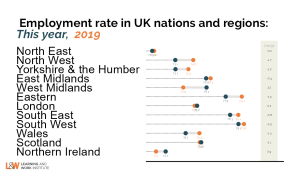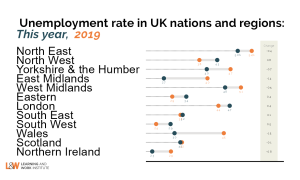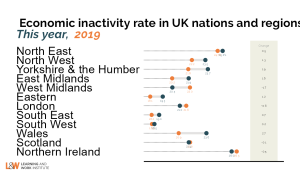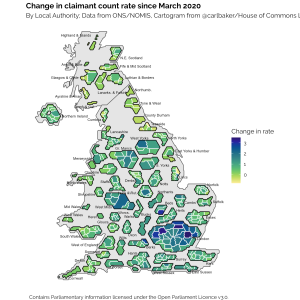May 2022
1. The cost of living is outpacing wages, with the largest monthly fall in real regular wages in a decade
The latest data show average regular earnings grew by 4.1% in the year to March 2022, though end of year bonuses for some pushed headline earnings growth up by 9.9%. With the Consumer Price Index rising by 7.0% in the year to March 2022, this means that real regular earnings have fallen over the year. In March, regular pay in real terms fell by -1.9%, the largest single month fall since January 2012. The cost of living crisis is likely to deepen in the months ahead, with the Bank of England forecasting inflation to rise to around 10% this year.
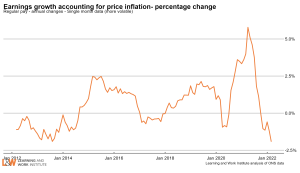
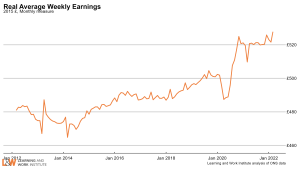
2. Unemployment has fallen, but employment is still 504,000 lower than pre-pandemic due to people leaving the labour market
Employment rose by 83,000 in January to March 2022 compared to the previous quarter but remains 504,000 lower than before the pandemic. The timelier but less comprehensive measure of PAYE employees increased by 120,700 in April 2022 compared to the previous month and is 530,000 above its pre-pandemic level. Unemployment fell by a further 118,000, but economic inactivity is still 460,000 higher than pre-pandemic.
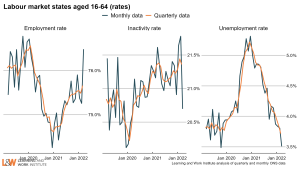
The number of vacancies in the ONS vacancy survey remains at record levels. The number of online postings from ONS and Adzuna is 37% above the February 2020 level (seasonally adjusted). Compared with the same week in 2018, the overall vacancy level is up 10%.
3. There are fewer potential workers for employers to recruit, with 600,000 over 50s leaving the labour market since the pandemic started
Rises in economic inactivity have been primarily driven by those aged 50 and over and people with long-term health problems and disabilities. There are 2.3 million people economically inactive due to long-term sickness or disability, up 8.6% in the last nine months.
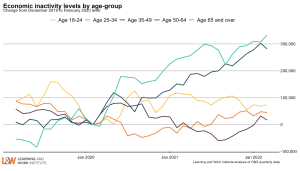
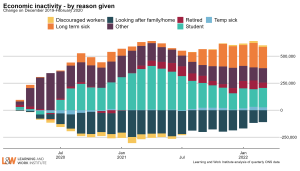
In addition, the number of people claiming unemployment-related benefits remains 355,700 above the survey measure of unemployment, despite a fall of 56,900 in April 2022 compared to the previous month. It is important that Jobcentre Plus engage with everyone on out-of-work benefits to ensure their status is recorded correctly and everyone who wants to work gets help to find a job.
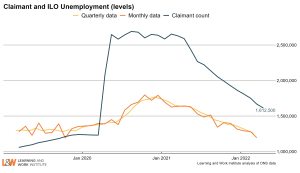
4. Long-term unemployment continues to fall for both young people and adults, but remains higher than pre-pandemic for those aged 25+
Long-term unemployment is a particular concern as it reduces people’s chances of finding work and can reduce their health and wellbeing.
Long-term unemployment rose significantly through the pandemic. It has fallen recently for young people and is now 30,000 lower than pre-pandemic. There are 51,000 more people aged 25 and over out of work for 12 months or more than before the pandemic (Dec 19-Feb 20), and this is now falling (either due to people finding work or moving into economic inactivity).

it’s good news that youth unemployment and long-term unemployment are at record lows. However, the number of young people economically inactive and not in full time education (601,000 or 8.8% of young people) is 100,000 above its’ 501,000 minimum (November-January 1999). Support for young people remains too disjointed and a Youth Guarantee is needed to offer all 16-24 year olds a job, training place or apprenticeship.
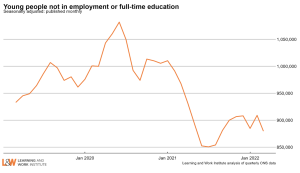
5. The employment picture varies across the country
Employment rates are now higher in the West Midlands, London, Northern Ireland and Scotland than pre-pandemic, but remain lower in other regions and countries. Economic inactivity is highest in Northern Ireland and the North East, and lowest in the South East and South West.
